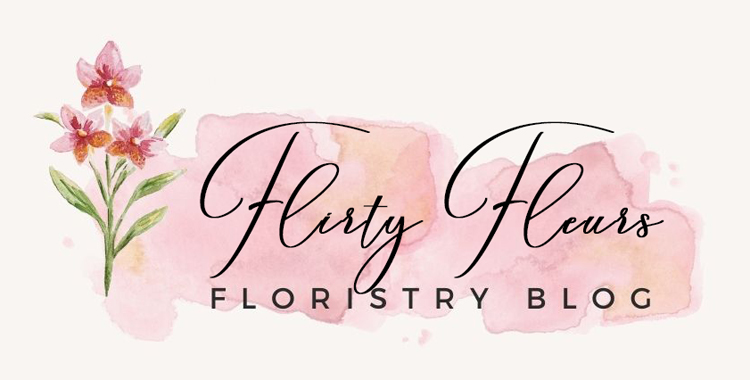When you create your profit and loss statement to assess the health of your business, you will see:
Sales minus Cost of Goods Sold equals Gross Profit.
You pay for all of your expenses with the gross profit. If you are finding that your gross profit is not enough to cover your expenses, you have two options, you can either raise gross profit by increasing sales or lowering cost of goods sold, or you can lower your expenses. Certainly, that’s an over simplification, the art of business management is in the hundreds of nuances held within those two options. For this article, let’s assume that your expenses have been carefully streamlined and that you are doing due-diligence in your purchasing habits. Therefore, let’s investigate the pricing end of the equation.
How you set your prices may be one of the most important management decisions you make as an owner or manager of a retail flower shop. A tremendous amount of work goes in to running a flower shop, wouldn’t it be a shame to under price your products and not be able to make ends meet? On the other hand, over pricing and putting yourself out of the market before you even begin would also prove to be disastrous. Market conditions and your competition will, in large part, determine your pricing. Bear in mind, though, that depending upon these items only, without analyzing the actual cost of the products you are selling could cause you to loose your shirt. Pricing strategy can be a complicated thing in a retail flower shop. This is because there are perishable items and skilled labor to be factored in along with the raw cost of goods.
Let us consider each of these factors one at a time. We’ll begin with the cost of goods sold (COGS) because that is the most straight-forward of the three. The cost of goods sold is the price you paid for the item that you are selling, plus any cost associated with buying and owning that product until such time as you sell it. If you were selling widgets, and you purchased a widget for three dollars, your COGS would be $3. In the flower business, you’ll need to add the cost of your fresh flower preservative or any other product that you must add to the flowers to make them saleable. In the case of an arrangement, your cost of goods includes the flowers, container, preservative, and ribbon or accessories.
Secondly, with perishable items, you’ll have a certain amount of shrink, or loss of product. Take time to analyze the amount of product that you loose. For every $100 worth of fresh flowers you buy, you should factor in approx 5% loss for shipping and normal damage. You will also need to find out your own shop’s loss factor. Let’s say for this example that you loose 10% of your fresh flowers because they are not sold before they go out of date, or because they are wasted or broken in the shop.
Now, let’s look at the components of a fresh flower arrangement. We’ll use some industry standards as a jumping off point for setting the price.
Fresh flowers: If the flowers cost $10 at wholesale, you’ll add $1.50 for shrink, .10 for preservative. Multiply by two to get the retail price of the flowers: $23.20
Container: The vase cost you $2.00. Multiply by two to get the retail price: $4.00
You’ll be putting in a bird, a bow and a butterfly, which will cost you $3.00, so your retail price on those items is $6.00. This gives us a total retail price of $30.20. We’re not done yet!
Third, the cost of the skilled labor that was used to create the arrangement must be considered. Look at your business plan and calculate the cost of your labor as a percentage of your total sales. Let’s say your labor costs are 12% of your total sales. You’ll need to add this labor factor into every item you sell. If you’d like to be able to sell giftware items without adding labor, you’ll probably need to do a little more analysis to figure your design labor cost as a total of your total sales. This number is probably more like 20% to 25%.Let’s go with 25% for this example.
Now the math gets a little more complicated. You need to find the selling price that reflects a 25% labor cost.Dust off your algebra I text and solve this equation:
Cost + (PRICE+(PRICE *25%))=PRICE
Or
$30.20+PRICE*.25=Price
Don’t panic!
The easier way to do this math is to just divide the cost by whatever percentage you need to add to the labor factor to make 100%.
$30.20/.75=$40.26
If we were using the 10% labor factor, the math would be:
$30.20/.80=$37.75
Factor in your market considerations and do your research on your competition. Set your price accordingly. Follow up with continued analysis and adjust the labor factor or the multipliers you use in the formula as needed until you find that you have the results required to cover your expenses. For example, you may find that you need to multiply your costs by 2.5 or even 3. You may find that your skilled labor is actually a 30% factor, or even a 10% factor.
Finally, we have not addressed delivery. That’s a topic for another article, but do remember to consider where the money is coming from to cover the cost of delivery. If you include delivery in with your regular expense (which you should), you’ll need to either add a delivery charge, which in effect is just raising the retail sell price, or, you’ll certainly need to use a larger multiplier, closer to three than two.
In summary, you can analyze pricing from dawn to dusk, in fact, many people make a career of it! I recommend that you set a formula based on your best research. Make the formula simple enough for your entire staff to follow. Most importantly, don’t stop there. Be diligent about checking your numbers on your profit and loss statement, and adjust the formula as often as needed.
Karen Marinelli is a Floral Industry Professional with nineteen years of experience in the academic, retail and wholesale sectors of the industry. She believes the common goal should be to sell more flowers to more people, more often. For information on How to Open a Flower Shop, http://openaflowershop.com
To order flowers online, visit http://send-flowers-online.ws
This article may be reprinted without permission under the following conditions:
Article must be printed in its entirety.
Author information and links must be printed exactly as above.
About the author:
Karen Marinelli is a Floral Industry Professional with nineteen years of experience in the academic, retail and wholesale sectors of the industry. She believes the common goal should be to sell more flowers to more people, more often. For information on How to Open a Flower Shop, visit www.openaflowershop.com
To order flowers online, visit www.send-flowers-online.ws



Do you know of a program for a computer that you can put in the names of flowers and the cost and labor percentages and it will calculate it for you? Every time an invoice is given to you , you can go to the computer and change the price. Similar to a recipe for arrangements.
Thanks, Dianne
Dianne, I do have a friend working on a program like this, she and her husband are supposed to release it soon. As soon as she does I will be announcing it on Flirty Fleurs. I think we are all in need of this software!!
Thank you so much for replying. Look forward to hearing about the software when available. After thirty years in business I must have done something right. Things have sure changed.
Dianne
30 years!? That’s awesome!
Hello Alicia!
I was wondering what the name of the program is? since I am currently writing a business plan for my business class (in my junior year of highschool) and I am in need of finding out the prices of flowers and how much expenses would cost.
Thank you!!
Alice
Did you make a mistake in your math or is it just me? You wrote:
“If we were using the 10% labor factor, the math would be: $30.20/.80=$37.75” If I’m understanding your explanation clearly about dividing the cost by whatever percentage you need to add to the labor factor to make 100%, then shouldn’t .80 be .90?